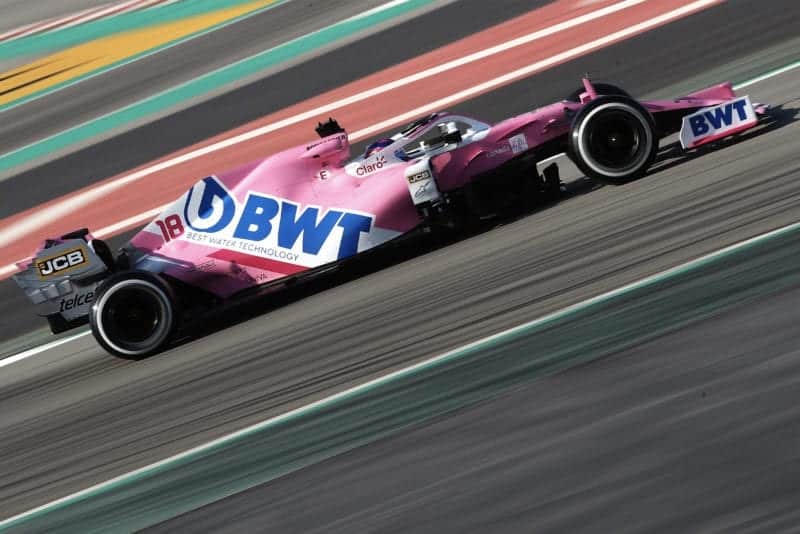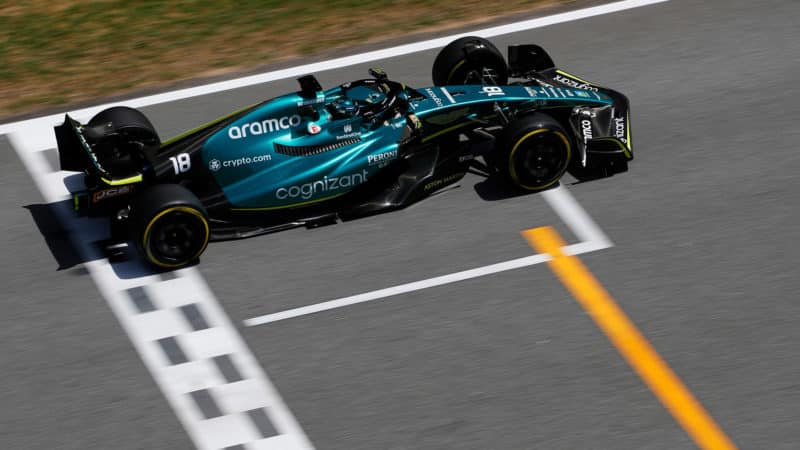However rival Renault protested the “pink Mercedes” on the basis that its brake duct design was too similar to that of the team’s engine, gearbox and suspension supplier to have been created independently.
In the end the FIA agreed that Racing Point had broken the rules and copied the Mercedes parts. The team was fined €400,000 and docked 15 constructors’ points – which ultimately meant a very expensive difference between third and fourth place.
Two years on and as most teams showed up with their latest update packages in Spain the Silverstone team again caught the eye, with its sidepod design resembling that of the RB18 – enough to prompt cynics to dub it the “green Red Bull.”
This was a very different issue. Clearly there is no partnership or co-operation between Aston Martin and Red Bull. However several key RBR aerodynamic people have switched camps to Aston as part of Lawrence Stroll’s recruitment drive, including top man Dan Fallows.
Admittedly he only started a few weeks ago, far too late to have an influence on the Spanish package, and Aston has also recruited from other teams. But it was enough to set a few tongues wagging. Had someone come with a little too much information in their back pocket?

Racing Point’s RP20 was an unashamed copy of the previous season’s Mercedes
Getty Images
Aside from any suggestion that information might have transferred from RBR to Aston, there was another issue – while being inspired by or copying other people’s ideas has been an established practice, you cannot do it via the process of “reverse engineering,” as Article 17.3 of the F1 technical regulations makes clear.
The rules refer specifically to LTCs, or “listed team components.” Those are the parts you have to design yourself and cannot buy in, which in essence means the chassis and the aerodynamic surfaces of the car, defined as “components whose design, manufacture and intellectual property is owned and/or controlled by a single competitor or its agents on an exclusive basis.”
In the regs reverse engineering is defined under the following four categories:
“The use of photographs or images, combined with software that converts them to point clouds, curves, surfaces, or allows CAD geometry to be overlaid onto or extracted from the photograph or image.
“The use of stereophotogrammetry, 3D cameras or any 3D stereoscopic techniques.
”Any form of contact or non-contact surface scanning.
“Any technique that projects points or curves on a surface so as to facilitate the reverse-engineering process.”
The rules further state that in cases where parts “closely resemble” those of a competitor “it will be the role of the FIA to determine whether this resemblance is the result of reverse engineering or of legitimate independent work.”
In fact even before the Spanish GP the FIA was on the case, alerted by the process whereby teams now have to keep the governing body up to speed with details of any updates that it intends to bring to the track.

FIA was monitoring the sidepod design during development
Aston Martin
The FIA duly carried out a routine investigation, during which Aston Martin had to prove that it had indeed designed its new package from scratch. The investigation indicated that there was no evidence of any information deriving from Red Bull, or indeed of the reverse engineering categories as outlined above. Aston showed that it had done its own R&D, and over a period of months.
As noted teams have always been influenced by other cars – the 1979 Tyrrell 009 looking remarkably like the previous year’s Lotus 79 is one classic example – but now there’s a strict definition of what you can do: “Although it is permissible to be influenced by the design or concept of a competitor’s LTC using information that must potentially be available to all competitors, this information may only be obtained at competitions or tests.”
In other words you can’t go to a friendly team’s factory and view their car armed with a camera and tape measure…
It’s worth noting that when the AMR22 was launched back in February Aston chief technical officer Andrew Green made it clear that the team didn’t know if its chosen concept would work, and had designed its chassis to be adaptable to different sidepod and cooling designs, should they be required. And that is ultimately what has happened.




